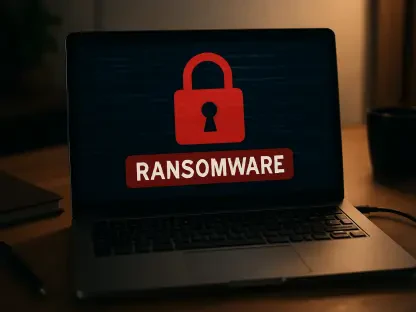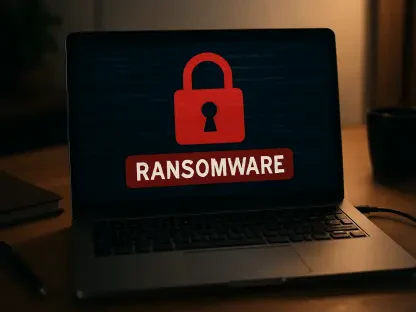Wireless or radio frequency wireless jamming designates the intentional activity of disrupting radio signals in order to disable any transmission that uses radio waves to circulate data or commands to and from RF devices.
When used for malicious purposes, this wireless jamming is actually a DDoS (denial of service) attack. Interventions of this type made by the authorized police of military forces qualify as benign jamming.
Frequency jammers involved in such actions are illegal as far as civilians are concerned, according to FCC regulations. Nevertheless, such equipment exists, as well as guided instructions on how to fabricate artisanal wireless jammers. Some locations use jammers in order to disable cell phone use so that exterior cyber-attacks are prevented (server rooms, operating rooms), or so that cell phone silence would be ensured (theaters, churches).
The Hilton wireless jamming case
One of the above location jammers examples comes from the recent Hilton case: the elite hotels and resorts chain allegedly jammed guests’ Wi-Fi hotspots. For failing to provide data requested in the case, the FCC ordered Hilton to pay a $25,000 fine. It also issued an advisory on the matter and stated that hotels cannot engage in such practices.
Previously in 2014 the Marriott hotels had to pay a $600,000 fine for the same practice. A fine was also applied to Smart City Holdings and M.C. Dean Companies for convention centers hotspot jamming. The practice violates Section 333 of the Communication Act and it represents just a possible instance of RF jamming.
The RF wireless jamming background
Radio frequency (RF) devices have been around since before the tech boom – and the same happened with the technology looking to block radio waves transmissions.
Any wireless jamming operation needs a transmitter device tuned to the specific targeted frequency – and the necessary knowledge in radio transmissions. Obvious jamming methods translate into detectable, audible attacks, while subtle jamming has no audible residue and can only be noticed via its communication blocking effects.
Employed in military transmissions, or rather in blocking the enemy’s transmissions, these practices have a long history in the World War II. Jamming radio transmissions continued to be employed in various instances of armed conflicts.
The Communications Act of 1934 forbids the usage of jamming devices by civilians and therefore deems cell phone blocking as illegal. If an unauthorized person blocks the RF signals, he or she is actually stealing the licensed company’s private property – the radio spectrum portion that the company has paid for in order to be able to transmit the data. There are also potential safety hazard risks involved – and any such actions are strictly prohibited.
What does wireless jamming mean for the Internet of Things?
IoT is the next big thing, and it already started conquering the domestic and industrial sectors. Connected devices, computing, data storage, homes and appliances, services are all relying on this connectivity of modern environment technologies. The technological development enabled remote actions based on device integration – and a vast amount of these actions depends on Radio Frequency (RF) transmission. The familiar RF supports the credit card operations, the NFC tags that connect various gadgets, and ultimately the ability to control smart technologies.
Yet the cyber-security of all these various tech landscape elements is disputable. The protocols are fragmented, the users are not cyber-aware (at least not all of them), and cyber-crime lurks in the shadows. Whether we are talking about cyber criminals or just common thieves that have adopted technology in their operating methods – the IoT users are vulnerable to existing and potential dangers. Individuals and companies, as well as security researchers are preoccupied by this gap between the fast-expanding tech environment and the protection measures. Or, simply put, many are wondering if cyber-security will be able to keep up with the new and multiplying threats and their future challenges.
For example, one instance of direct confrontation with such malicious practices was videotaped this summer by a customer of Manchester Fort Shopping Park. You can check the video here.
An entire parking was filled with cars out of their owners’ control reach for over half an hour. All the alarms going out, unstoppable, the doors not responding to commands – the event well raised a new kind of concern: what if IoT devices are all vulnerable to access control hijacking.
The question itself is not new. However, the longer it takes for the cyber-security industry to provide a functional solution, the more critical this issue becomes.
How to keep safe from wireless jamming
–Reporting any incident of this kind to the appropriate authorities would be the first recommended step;
–Frequency Hopping Spread Spectrum (FHSS) is a method of rapidly switching among many frequency channels in order to avoid becoming an easy target for cyber-attackers; there is Slow Frequency Hopping (SFH), Fast Frequency Hopping (FFH), as well as hybrid FH; some devices come with Adaptive Frequency Hopping (AFH) enabled by default in order to avoid interference, but this feature is also effective against the less elaborated jamming attempts;
–Specialized companies offer anti-jamming services; you can check the description of such a service destined to protect the tracking of a cargo against jamming incidents here; any enterprise-level protection should come via a specialized provider, be it a defense device/system, or a continuous security system that monitors the company’s system against jamming incidents.
–Educated choices when it comes to choosing your devices. Always inquire about the product’s cyber-security features and if possible try to purchase the most up-to-date tech; keep in touch with the manufacturer and solicit help if intrusions occur, or if you notice the usual pattern of device functioning being disrupted (when data transmission has been tampered with, the settings might appear changed). When noticing such occurrences, check with those whom might have made the changes in your household or office space, and if no one accounts for the alterations, get in touch with your provider to go through all possible explanations and check your system for relevant log entries.
Other proposed solutions include an RFID Firewall for the owners’ benefit, a RFID Bill of Rights, communication encryption to prevent intentional intrusions or a layered RFID security model.
An Omni-solution for more than one problem
Securing RF transmissions would provide defense against hacking – this can solve various vulnerabilities that involve the same source-issue: the fact that radio frequencies are accessible to unauthorized entities.
Smart devices employ RF to function and connect, chip cards communicate through the same method, wireless Internet signals are hackable, and so is the entire IoT environment – unless the researchers come with a much-needed efficient solution.
Fragmented methods of protection are available at the moment, and it is highly recommendable to employ one, especially when securing company data and communications. Until better, more unified means of protection would be embedded in out devices and systems, it takes knowledge, awareness and attention to details to remain cyber-safe.









